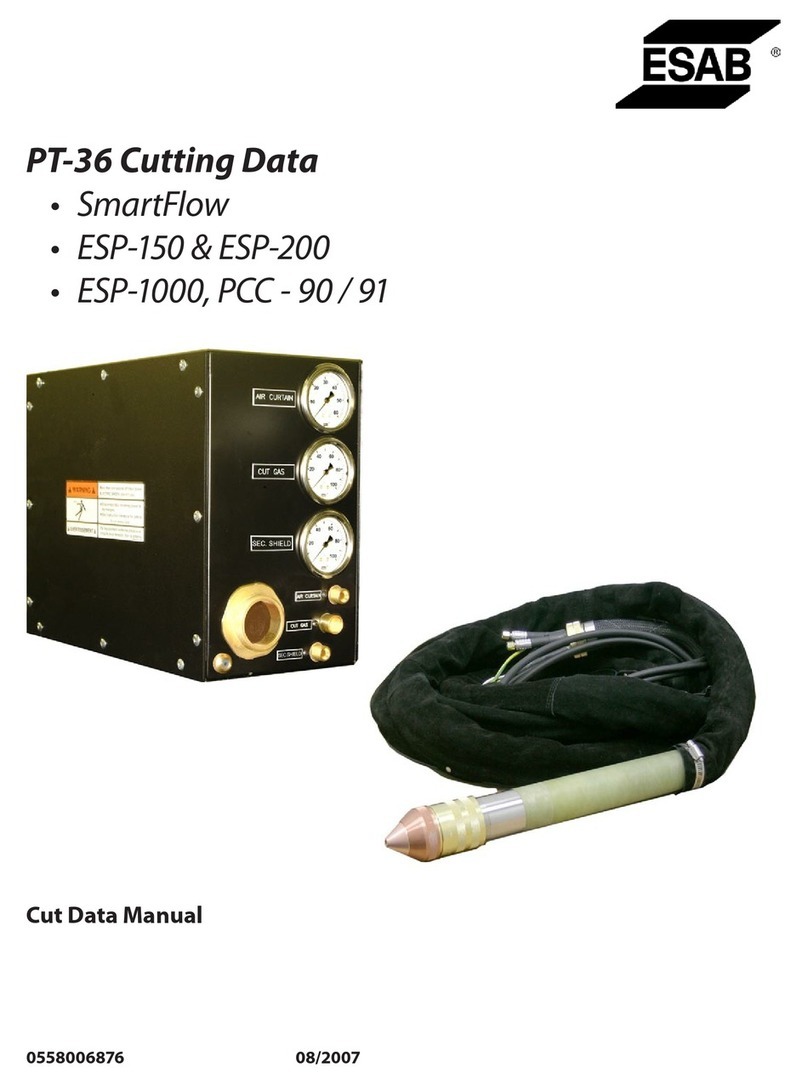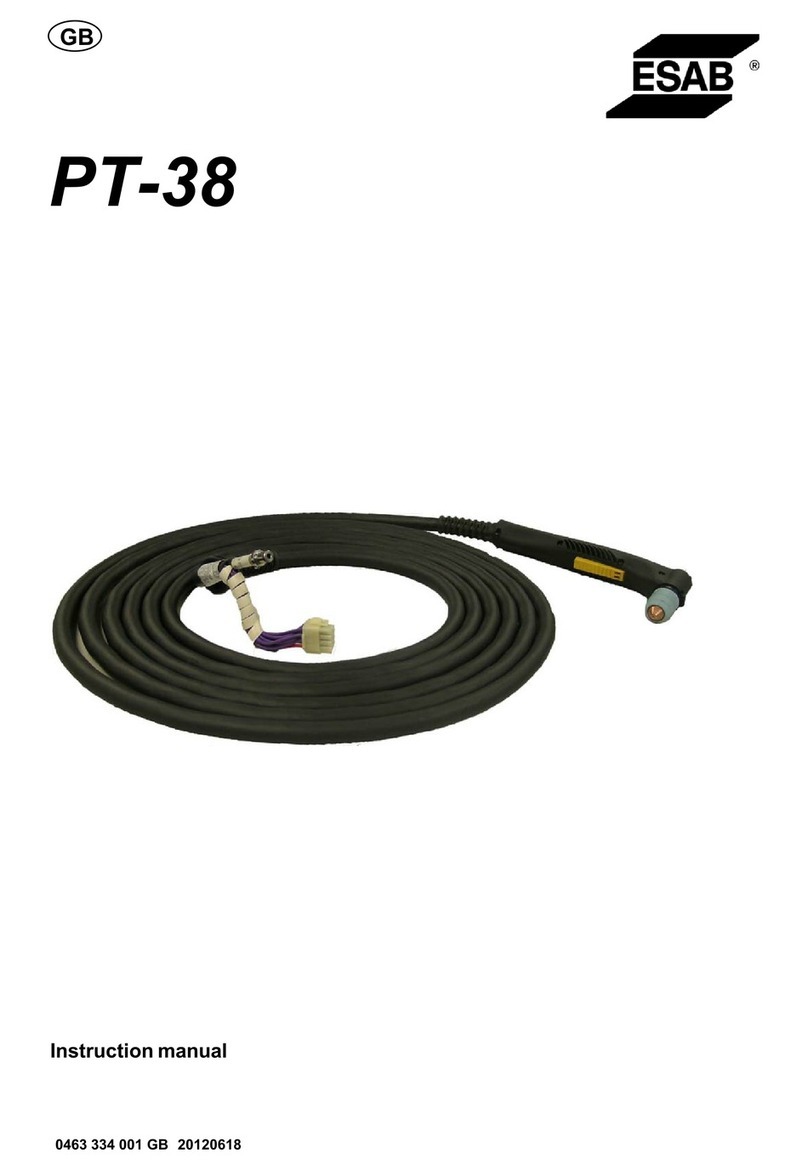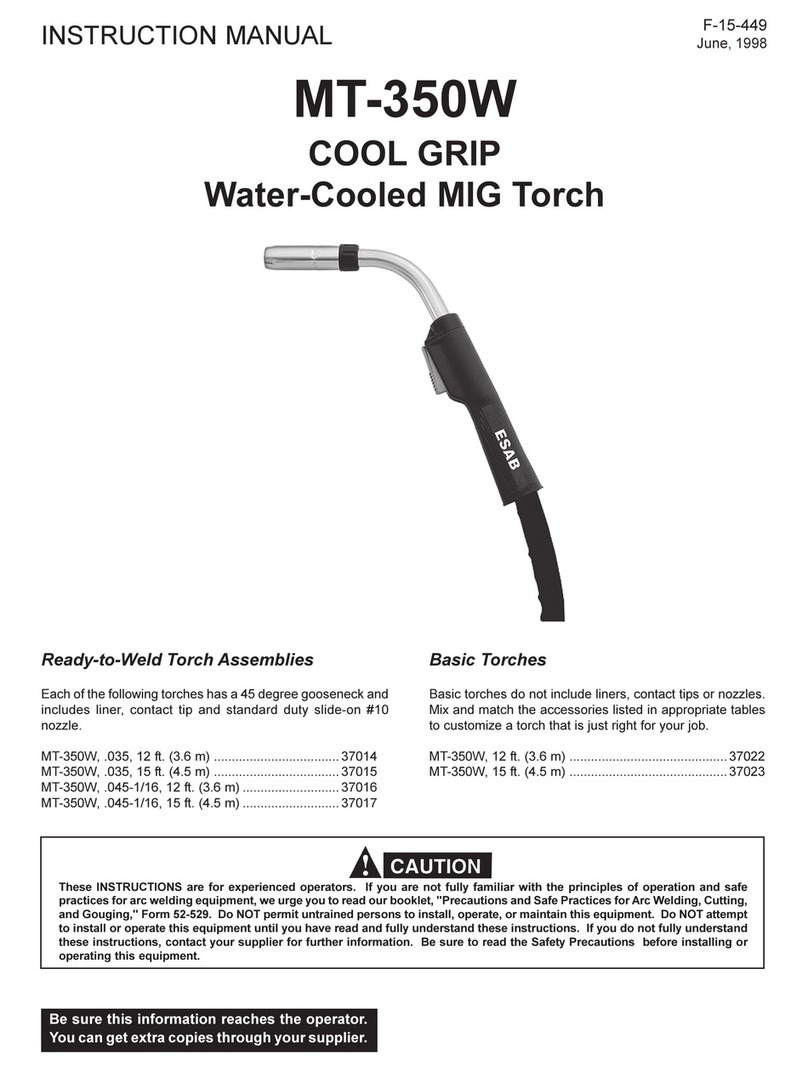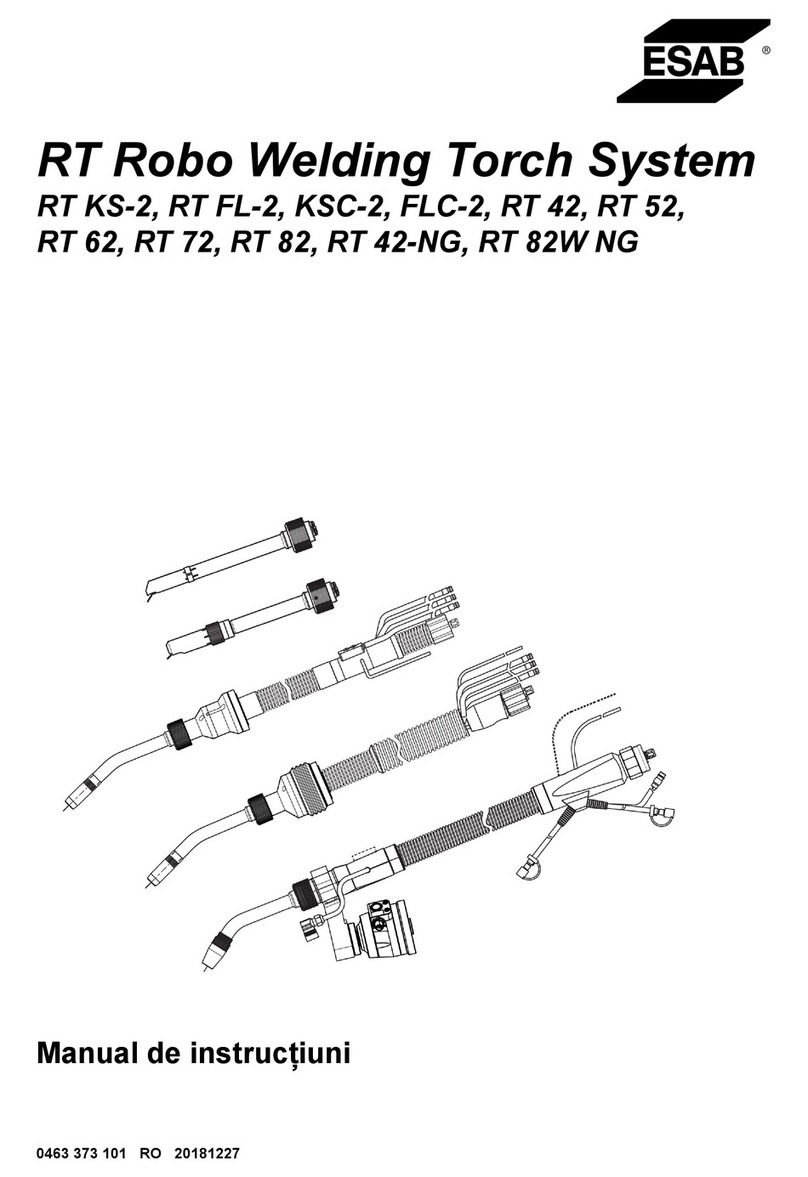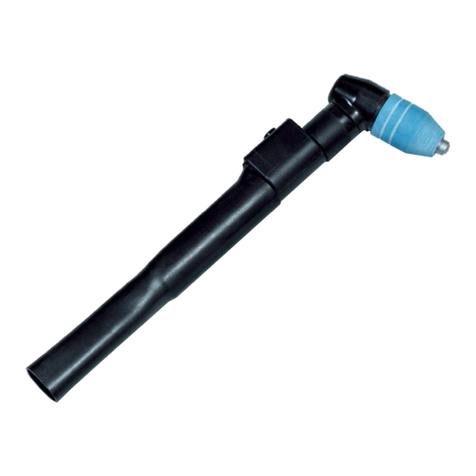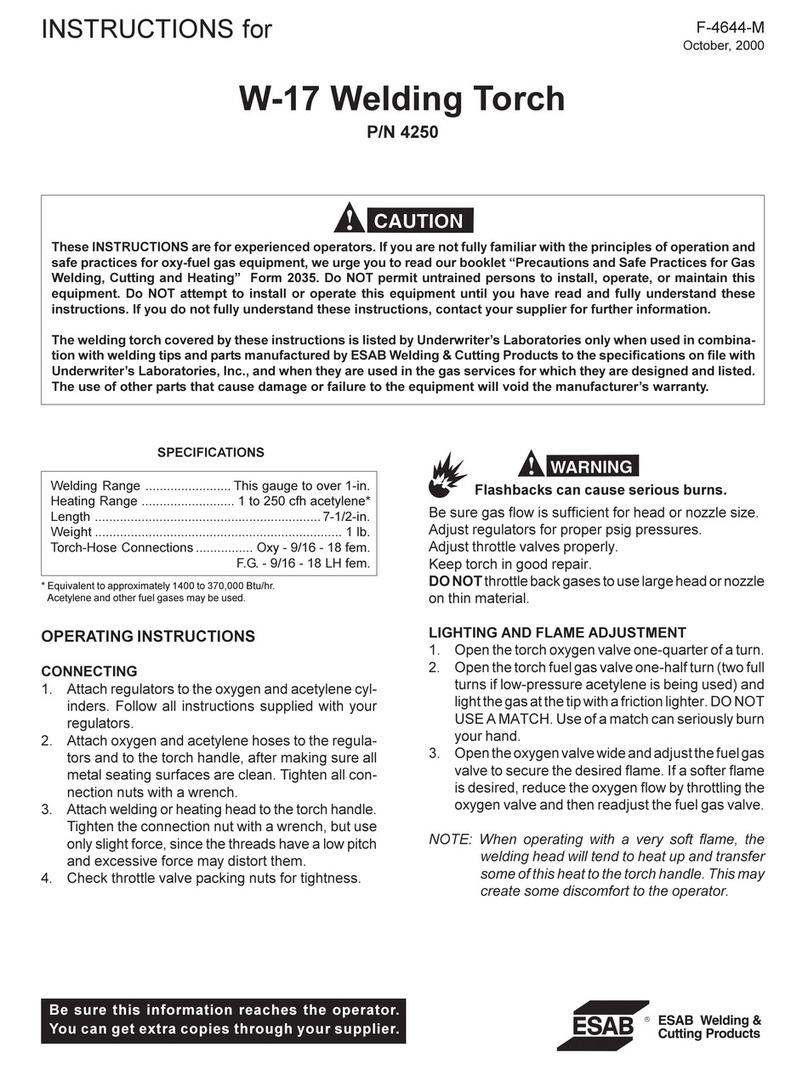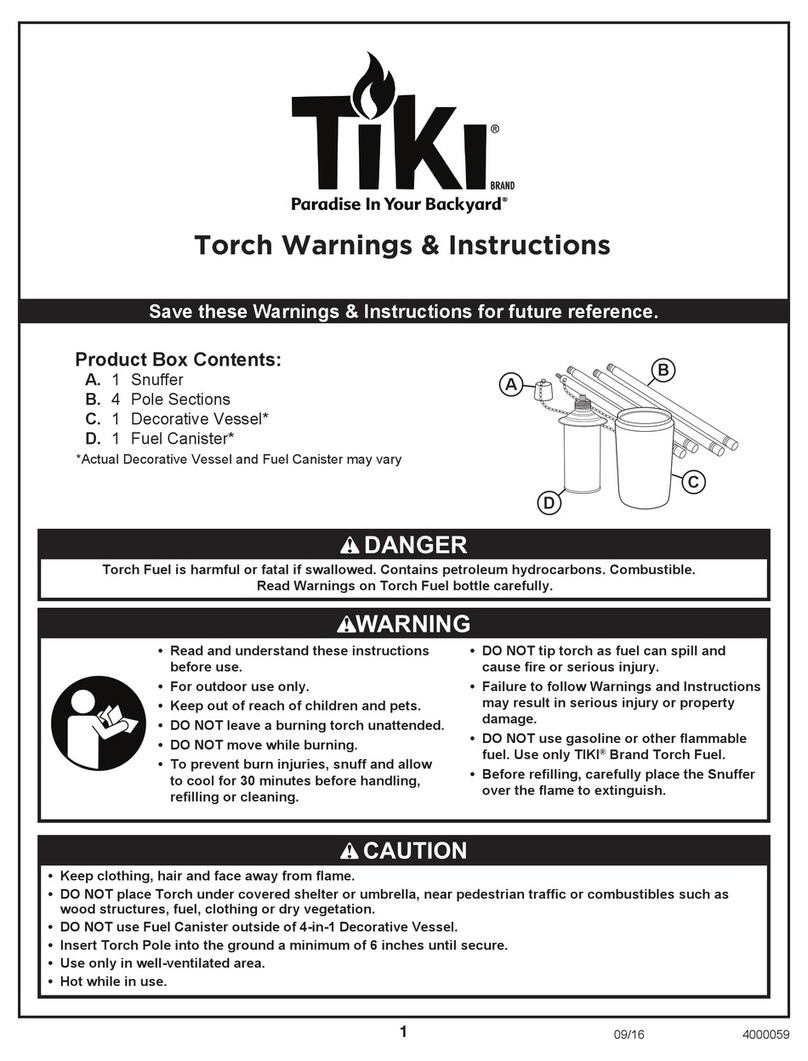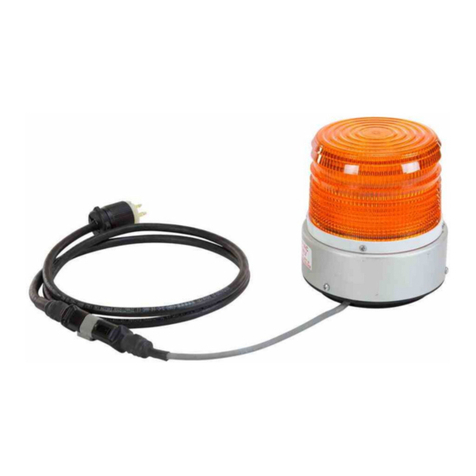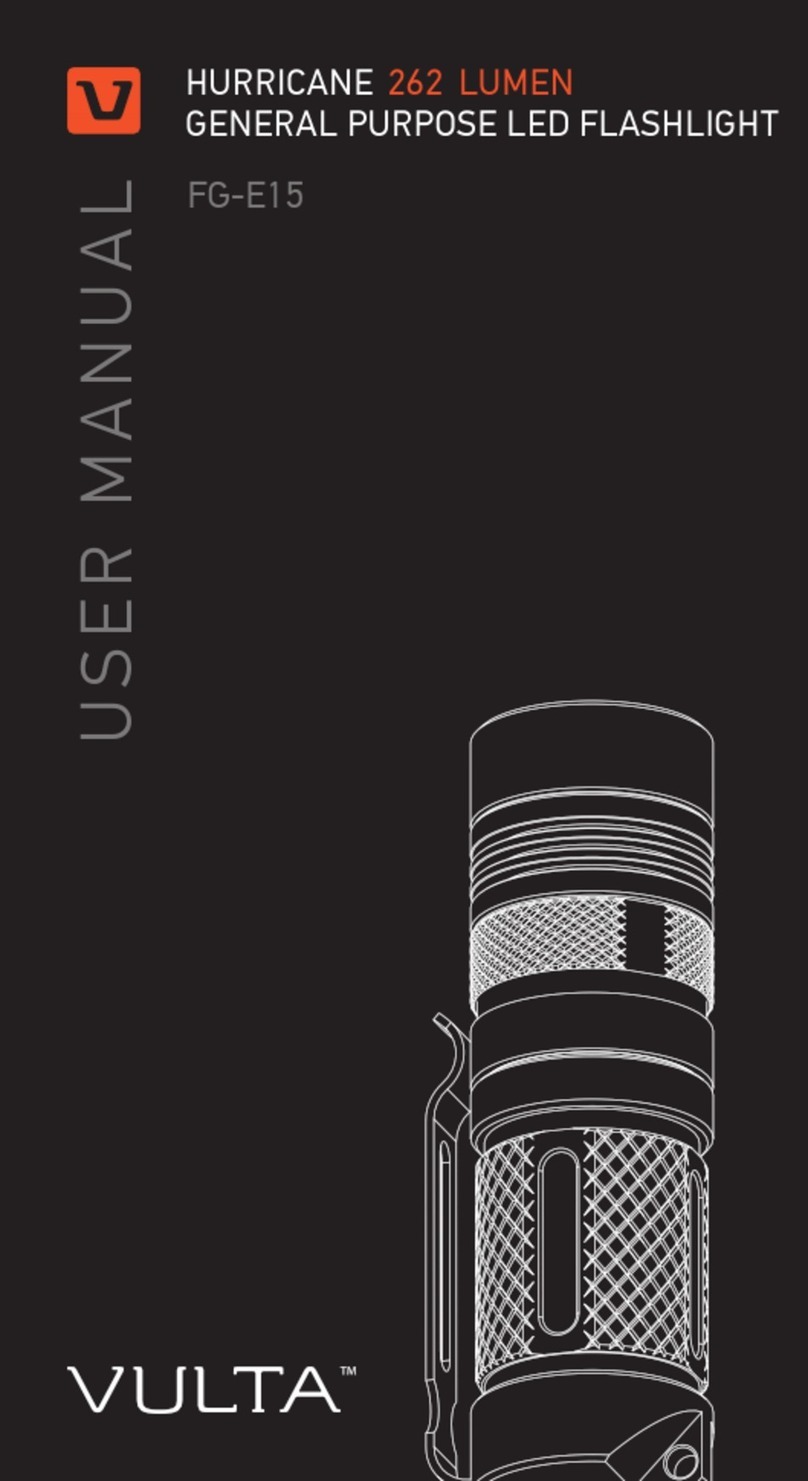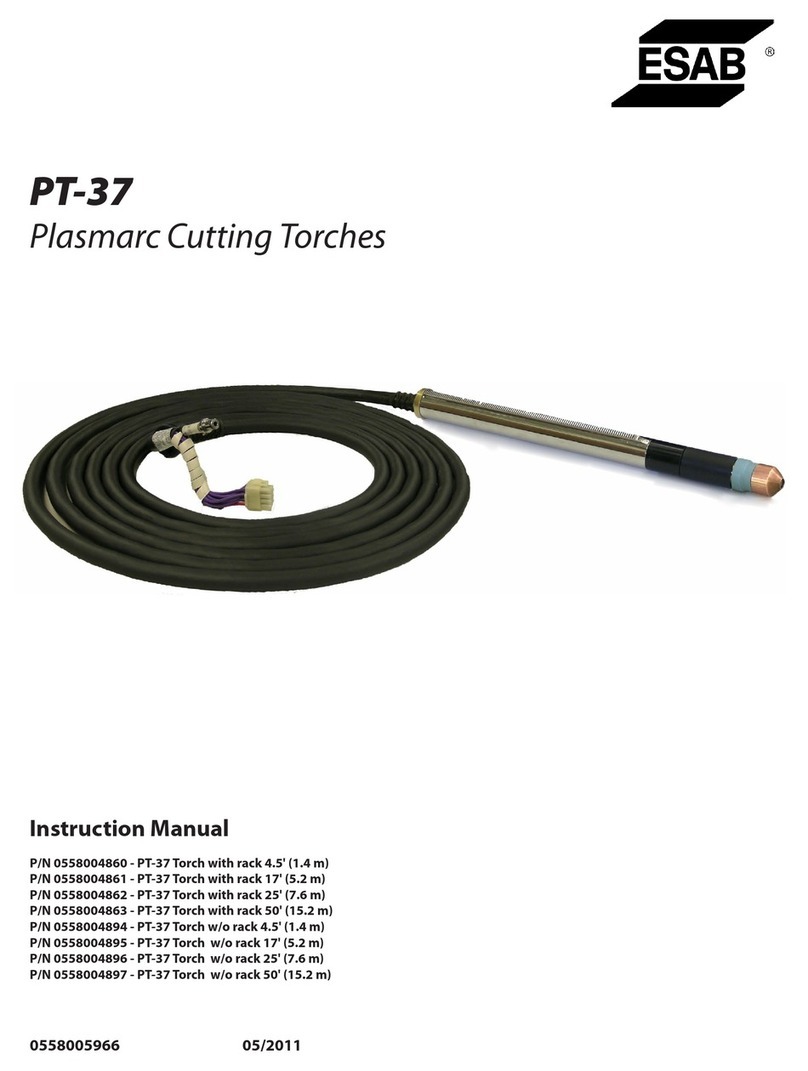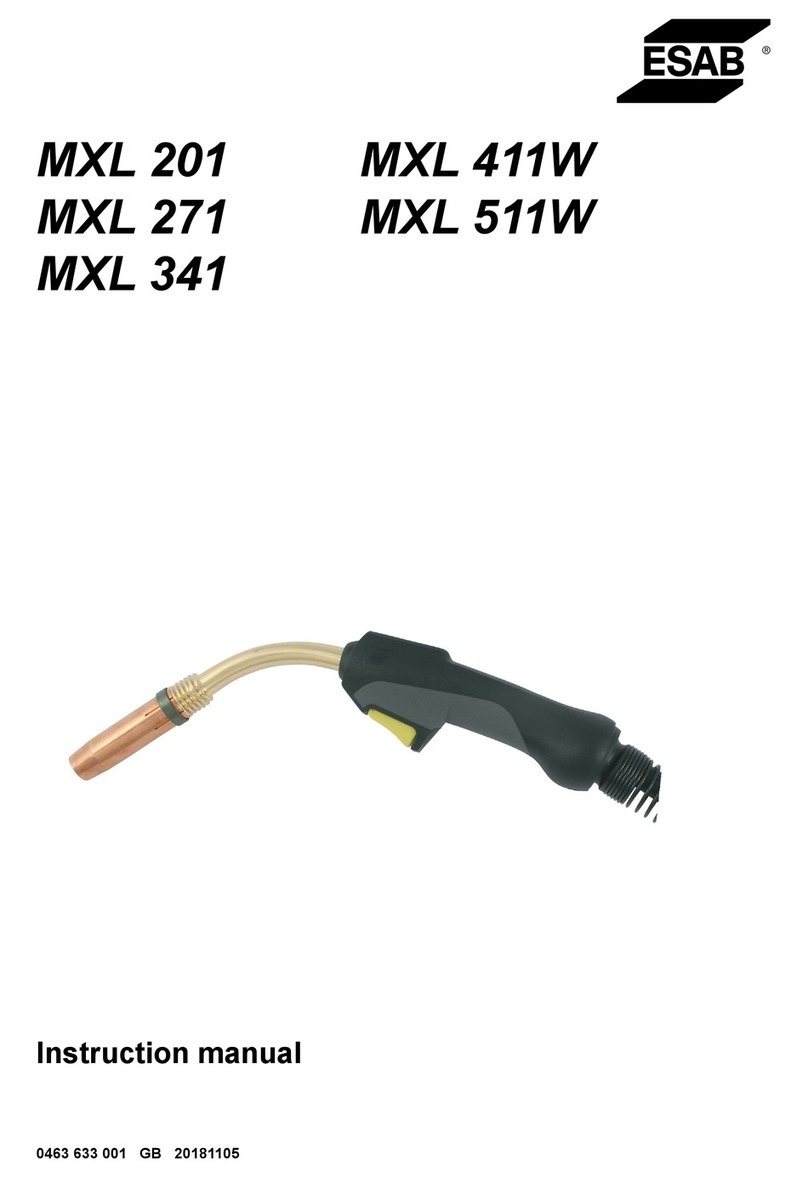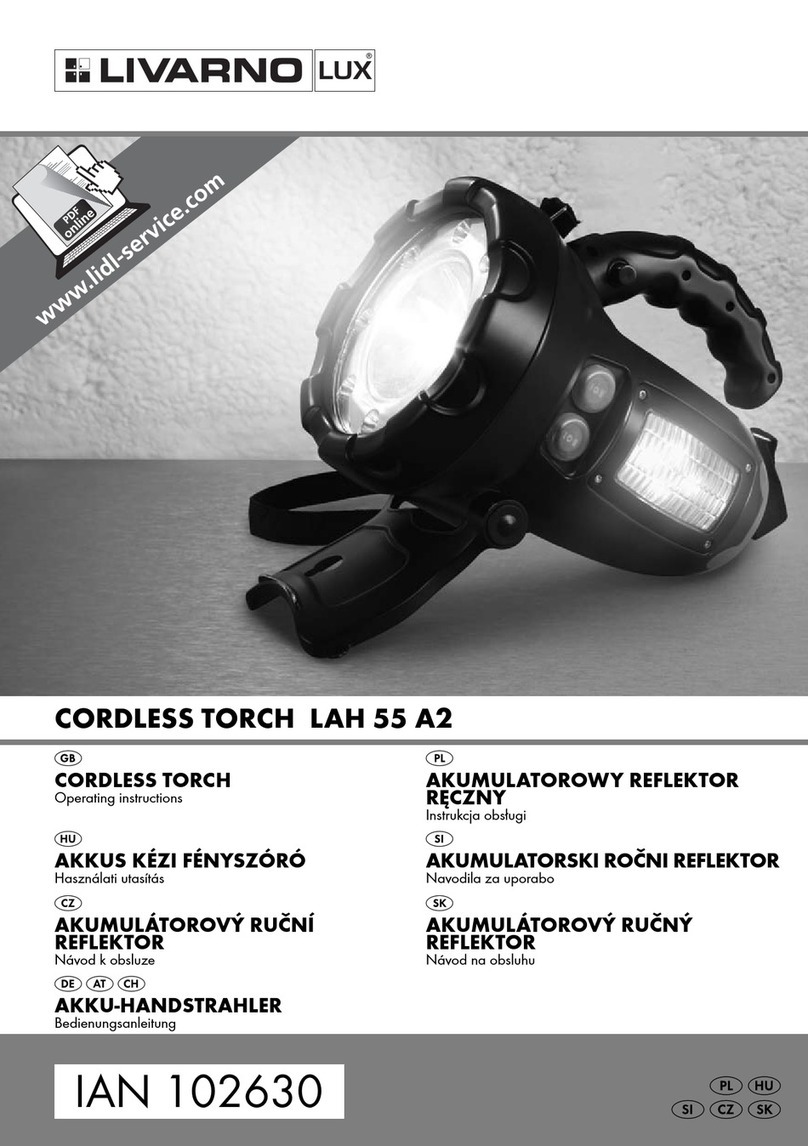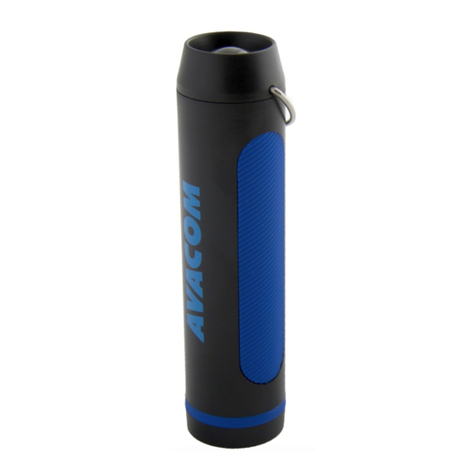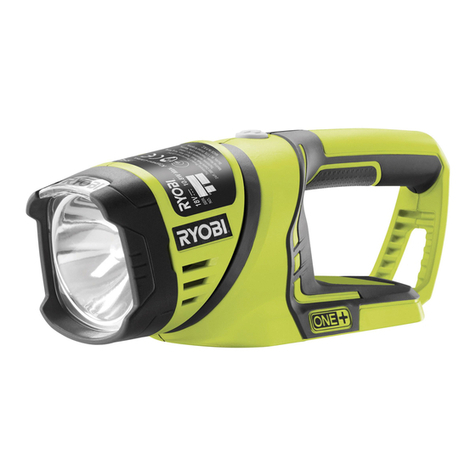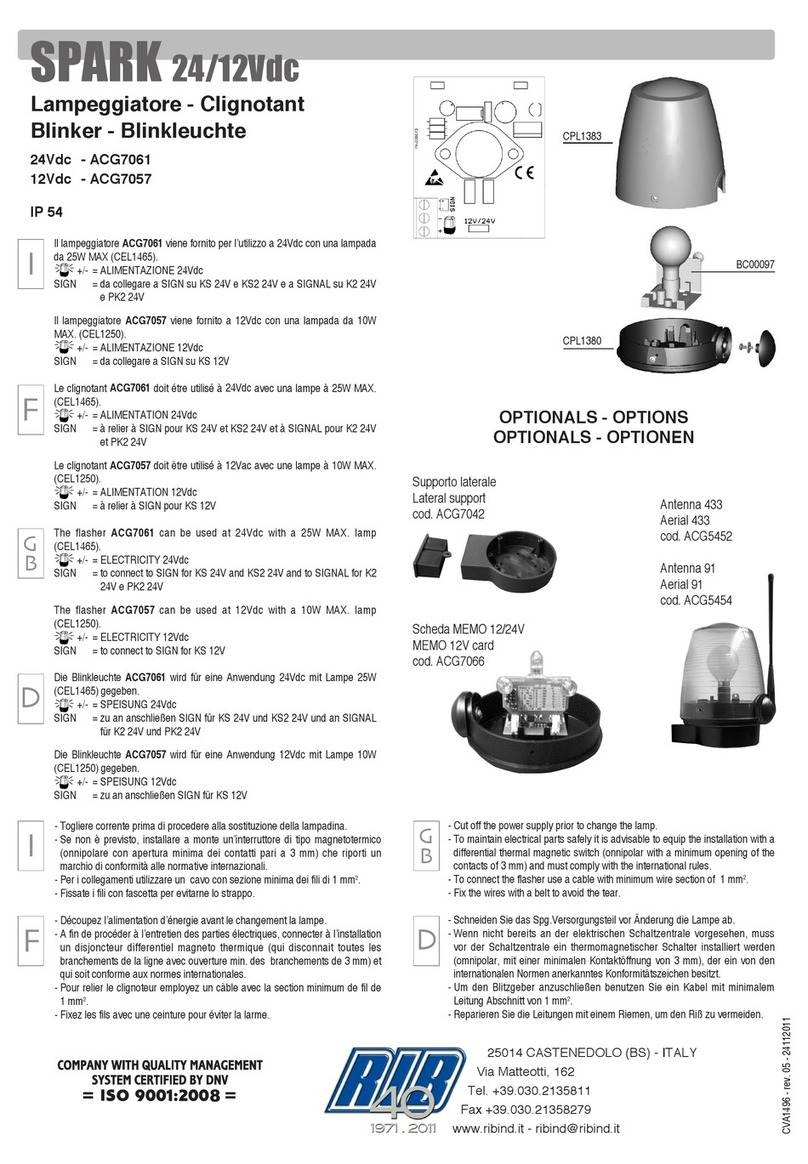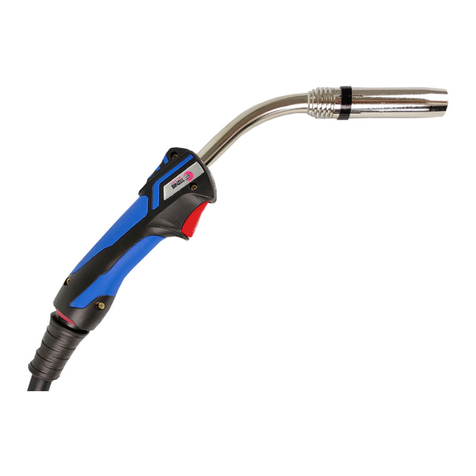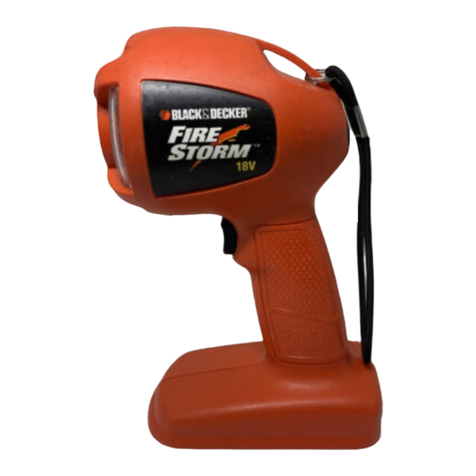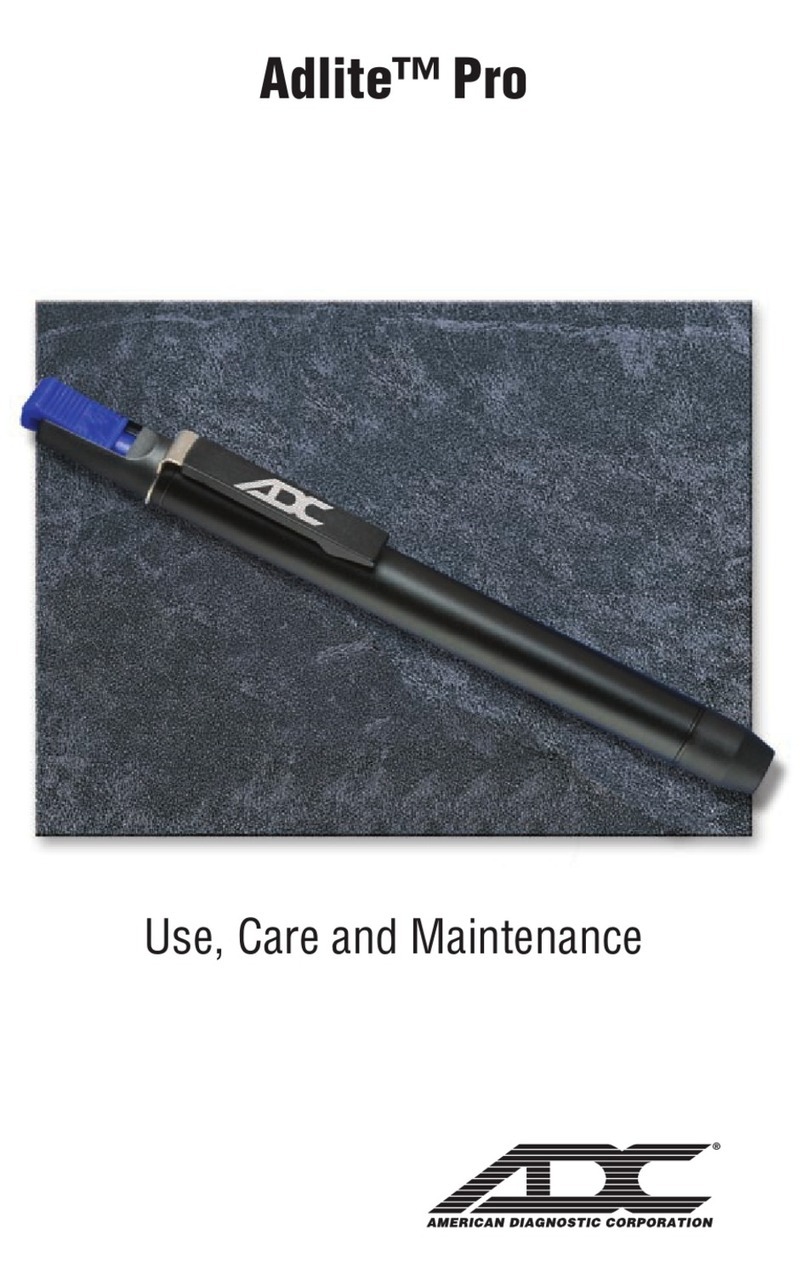
2. Having set or reset your regulator to 5 psi delivery
pressure,open the needle valve on the torchhandle,
and light the gas at the tip with a friction lighter.
3. After lighting the torch, adjust the flame size, if nec-
essary, by changing the setting of the regulator pres-
sure-adjusting screw or partially closing the torch
needle.
SHUTTING OFF:
1. For short intervals, merely close the needle valve on
the torch handle.
2. For longer periods, or if you are going to leave the
outfit unattended, close the tank valve as well as the
torch valve.
MAINTENANCE:
1. If the needle valve turns too freely, or there is gas
leakagearoundthevalve stem,tightenthevalvestem
packing nut. If leakage persists, replace the valve
stem assembly (P/N 21784).
2. If the needle valve does not shut off complete, re-
move the valve stem assembly and wipe the seating
surfaces on the stem and in the body with a clean
cloth. If the valve stem is bent, or the seating surface
nicked or marred, replace it with a new assembly
(21784).
3. Eachtorchisequipped with afilter-screw,whichholds
a mixer disk in place. If flow of gas through the tip
appears to be restricted, remove the filter-screw with
a1/8-in.socketkey(‘Allenwrench’)andreplaceboth
filter-screw and mixer disk. See F-15-241 or F-15-
242 supplied with the quick-disconnect Swirljet tips.
PRECAUTIONS & SAFE PRACTICES
A. DO NOT let acetylene or LP-Gas escape near any
possiblesourceofignition.Accumulationsofeitherin
certain proportions may explode if ignited.
B. NEVER store acetylene or LP-Gas tanks (cylinders)
in a closed or confined space, such as a closet, tool
box, or automobile trunk.
C.NEVER solder a container that contains or has con-
tained flammable liquids or vapors (including gaso-
line, benzene, solvents, and other similar materials)
unless the container has been thoroughly purged of
all traces of flammable material and vapors.
D.Before starting work always test for leaks around all
joints with a soapy water solution.
E. NEVER use a flame to test for leaks of flammable
gases.
F. NEVER use a tank with a leaking valve.
G.DO NOT attempt any repairs to an acetylene or LP-
Gas tank, except to tighten the packing-gland nut on
the valve.
H.DONOTabuse or drop tanks or handlethemroughly.
I. NEVER use a tank as a roller or support.
J. NEVER use a hammer, wrench, or pliers on a tank
valve equipped with a handwheel. On small acety-
lenetanks,alwaysusePREST-O-LITEvalvewrench
(box type, P/N 505L00).
K. DONOTopentankvalve morethan1-1/2turns. (Pref-
erably no more than 3/4 of a turn.)
L. Leave valve wrench on tank valve stem so that tank
valve can be closed quickly in case of emergency.
M.NEVER allow full tank pressure to enter the hose.
Always use a regulator when there is a needle valve
on the torch handle.
N.NEVER lay a torch down unless the gas flow has
been shut off. If you want to maintain a pilot flame
whenyoustopworkforshortintervals,providearack
orstandforthetorch, away from combustible materi-
als. Do not leave it unattended unless you are sure
there is no danger of it being disturbed by unautho-
rized persons.
O.Examine your hose for leaks frequently. Dipping it in
abucketofcleanwater,withthepressureinthe hose,
is the quickest and easiest ways.
P. DO NOT use hose that is worn, or any equipment
that is in need of repairs.
Q.DO NOT start fires. Be very careful when working
near combustible material.
R.Fuel gas tanks (cylinders) are equipped with fusible-
metalsafetydevices.NEVERstoretanksnear radia-
tors, furnaces, or other heat sources.
Prest-O-Lite and Swirljet are registered trademarks of ESAB Welding & Cutting Products
F-15-243 01/2001 Printed in U.S.A.
